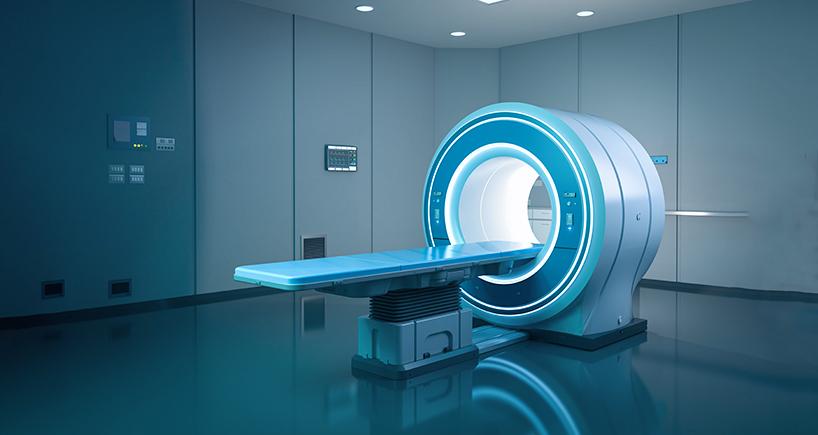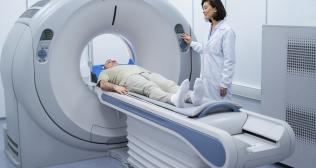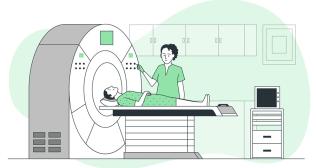
MRI: A Closer Look at the Purpose, Mechanism and Risks of the Technique
Magnetic resonance imaging (MRI) is a sophisticated, effective and non-invasive technique in the field of medical imaging. The integration of MRI in the clinical setting is a sign of significant advancement in diagnostic practices, eliminating the need for exposure to potentially harmful ionizing radiation.
An MRI scan provides detailed images of bodily structures and organs using magnetic fields and radio waves. Let us understand more about MRI, including its purpose, mechanism and risks.
The basics of MRI
MRI uses powerful magnets to generate a strong magnetic field, which interacts with the protons present in the body. Following this interaction, a transmitter emits radiofrequency pulses that continue to engage with these protons. Consequently, the protons emit a discernible signal, which is captured by a scanner and processed by the computer to create detailed cross-sectional images.
Purpose of MRI
MRI serves as the gold standard for detecting injuries in several body parts, such as the brain, skeletal system and soft tissues. It can be of several types, and they are selected based on the region of the body to be examined. Some common bodily structures that are examined with an MRI include:
A brain MRI (also known as cerebral MRI) aids physicians in detecting and analyzing a range of complications, such as abnormal swelling of the cerebral vessels, brain and spinal cord injuries, brain aneurysms, brain and spinal tumors, multiple sclerosis, nerve and spinal cord inflammation and strokes.
A cervical spine MRI is employed to assess discomfort, numbness and tingling sensations in the arms, neck and shoulders. It’s also utilized to detect tumors, bleeding, swelling or inflammation around the spinal cord.
Heart
A cardiac MRI assesses the anatomy and physiology of the heart’s chambers, valves, vessel size and blood flow. It is also used to detect and monitor cardiovascular issues like tumors, infections, coronary artery disease and congenital heart conditions in children and adults.
Bones and joints
An MRI of the bones and joints helps determine bone tumors, disc abnormalities, bone infections and joint injuries.
Body
A whole-body MRI can detect structural changes and abnormalities in the body, including tumors in the abdomen, chest or pelvis. It also aids in the detection of hepatic conditions (such as liver cirrhosis) and inflammatory bowel diseases (like Crohn's disease and ulcerative colitis). Additionally, it is employed to detect abnormalities in the blood vessels and monitor fetal development.
What to expect during an MRI scan?
- During an MRI scan, an individual will be asked to remove all the metal objects from their body, as those can interfere with the magnetic field.
- Subsequently, they will be asked to lie on the motorized bed, which will then be moved towards the scanner. It’s crucial to remain still inside the apparatus for clear imaging and accurate results.
- If necessary, a contrast dye may be injected intravenously to improve the visibility of specific structures or abnormalities.
- A single scan can range from a few seconds to three or four minutes. For brief scans, one might be asked to hold their breath. The duration of the procedure depends on the region that’s being examined and the number of images required; it can typically take around 15 to 90 minutes.
MRI report
The MRI report prepared by a radiologist interprets the images, highlighting any abnormalities or areas of concern. It serves as a valuable tool for healthcare professionals, assisting in accurate diagnosis and appropriate treatment plans.
MRI: Are there any risks?
While MRI has revolutionized the field of medical diagnostics with its safe and intricate mechanism, it is important to be aware of the associated risks, which are as follows:
- Typically, MRI has no known side effects unless one has metal implants or objects that can potentially interfere with the magnetic field. However, most implants nowadays (such as dental implants, artificial hips and catheters) are typically constructed from non-magnetic or weak magnetic materials.
- The medical staff should be informed if one is pregnant; however, it doesn't prevent them from getting an MRI.
- Some may feel anxious due to the confined space and the loud noise of an MRI machine. To address this, ear protection is provided.
Those who are fearful, have allergies or are concerned about health issues should reveal their apprehension to the radiologist. They will address any such issue and ensure the safety of the individual.













